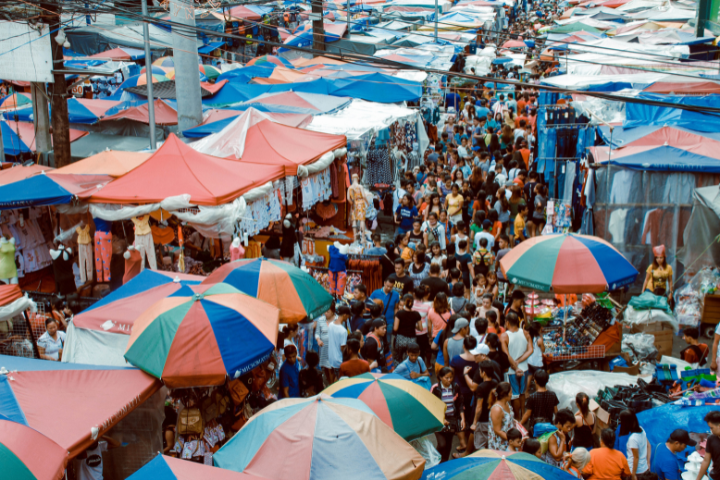The Asia-Pacific region is rapidly emerging as a retail e-commerce hub. The burgeoning middle class, high rate of digital adoption, and an ever increasing consumer purchasing power makes it a prime destination for startups or businesses looking to expand. Data shows that e-commerce sales are projected to hit $3 trillion in 2024. This accounts for 60% of the global online retail.
The exponential rise of platforms like Lazada, Shopee, and Alibaba, which saw double-digit growth year-on-year is proof that doing business in the region can be rewarding. A McKinsey study estimates that by 2025, Southeast Asia alone will see 350 million online shoppers, generating over $300 billion in annual gross merchandise value.
While it is rewarding and worthwhile for businesses to invest, navigating the region’s digital commerce landscape is not free of challenges and hurdles. If a business fails to foresee the challenges ahead, they can easily lose traction and fall into obscurity.
Smart business leaders would want to know what are these challenges ahead and what are the possible solutions. This blog dives into each challenges retail owners need to Know in APAC.
Anticipating the Major Challenges
A region undergoing rapid transformation is always susceptible to a volatile global economy, shifting consumer preference, and changing regulations. The recent study from Inside Retail gives us a look at what retailers consider their biggest challenge in the future:
1. Global Economic Factors (56%)
The global economic environment is the leading concern for retailers, with inflation, interest rates, and uncertainty surrounding energy prices continuing to affect business operations. Rising costs of goods and services translate into lower margins, forcing businesses to adjust pricing strategies and look for operational efficiencies. Many retailers in APAC rely on cross-border trade, and any slowdown in the global economy has impacted consumer spending and international supply chains.

2. Consumer Confidence (48%)
Consumer confidence remains fragile due to economic instability. High inflation and economic uncertainty have made shoppers more conservative with their spending. In response, retailers are focusing on improving their value proposition and enhancing customer experience to attract and retain price-sensitive consumers.

3. Currency Fluctuations (26%)
and Labour Costs (26%)
Currency volatility is another major concern for retailers who import goods or operate in multiple countries within the region. When combined with rising labour costs, it puts additional pressure on businesses that are already grappling with tight margins. The challenge lies in finding the right balance between cost control and delivering quality service.

4. Rental Overheads (24%)
and Staffing Issues (22%)
Retailers in densely populated cities across APAC, such as Tokyo, Singapore, and Sydney, face significant rental overheads. Combined with staffing challenges due to a shortage of skilled workers, these factors force retailers to re-evaluate physical store investments and rethink workforce management strategies.

5. Discounting (18%) and Supply
Chain Issues (18%)
Discounting remains a double-edged sword. While it helps attract footfall, retailers often find it difficult to sustain profitability with frequent price cuts. Simultaneously, global supply chain disruptions continue to cause bottlenecks in inventory management, leading to stock shortages or delays in delivery. Retailers must adopt more agile supply chain models to mitigate these risks.

Other Notable Challenges
- Government Regulation (14%): Compliance with local laws and regulations varies across APAC countries, making it difficult for retailers to navigate bureaucratic complexities, especially in cross-border operations.
- Overseas Competition (8%): As international brands expand into APAC markets, local retailers face growing pressure to maintain market share.
- Covid-19 Impacts (8%): Although the worst of the pandemic has passed, lingering effects such as shifts in consumer behaviour and ongoing health concerns remain obstacles for some retailers.
- Taxes (6%), Lack of Cross-Border Travel (4%), Work Health & Safety (2%): These additional factors, though lesser in impact, still weigh on the operational efficiency and strategic focus of retail businesses in the region.

The Mixed Bag of Retail Priorities
Given all the challenges we mentioned above, setting priorities as to what the business will focus on somehow gives it a compass to follow. As a retailer bidding to enter the market, here’s what your future fellow retailers are thinking as their priorities.
- Increasing Margin and Turnover (48%) Unsurprisingly, profitability and revenue growth top the list for retailers. With rising costs, businesses are increasingly focused on maintaining margins while simultaneously expanding turnover. This may involve a strategic shift toward higher-margin product categories, streamlining operations, and leveraging technology to reduce costs.
- Growing Online and Expanding Omnichannel Operations (50%) Retailers in APAC are well aware of the growing importance of online channels, but they are equally prioritising omnichannel strategies that bridge physical and digital shopping experiences. Consumers expect seamless shopping across multiple platforms, whether it’s in-store, online, or via mobile apps. Retailers are investing in infrastructure and technology to ensure a cohesive customer experience.
- Entering New Markets (20%) and Expanding Store Networks (22%) Retailers are looking to grow beyond their existing markets, either by entering new geographies or expanding their store networks. Cross-border expansion is a popular strategy in APAC, as businesses seek to capitalise on the region’s diverse and growing middle-class consumer base. However, this comes with challenges such as regulatory compliance, local market understanding, and supply chain complexities.
- Improving Customer Service (20%) Customer service is set to be a key differentiator in 2024, with many businesses recognizing the importance of personalised and responsive service to drive customer loyalty. This ties closely with consumer expectations, as we’ll see shortly.
- Hiring and Training Staff (20%) Talent acquisition and employee retention are also high on the agenda for retailers. Investing in staff training and development can improve operational efficiency and ensure a more consistent customer experience, helping businesses adapt to market changes.
Staying Ahead of Changing Consumer Expectation
Now that we’ve anticipated the challenges and dug deep on the priorities, let’s pull apart the consumer expectations in the region. Getting ahead of these expectations should help a retailer set their strategies right and tactically set up their sales journey.
Price (36%)
In a region full of upcoming economies, price sensitivity still remains the dominant consumer expectation. Inflationary pressures have made consumers more value-conscious, and retailers must continue to offer competitive pricing without sacrificing quality. Loyalty programs, targeted promotions, and personalised offers can help bridge the gap.

Customer Service (28%)
Consumers in Asia-Pacific expect business, especially local-grown ones to understand their preferences and be extra sensitive to their needs. Customer service has grown in importance, surpassing omnichannel experiences in consumer priorities. Shoppers are increasingly expecting more personalised interactions and faster resolutions to issues. Retailers can invest in AI-driven customer support tools, enhance staff training, and ensure efficient in-store assistance to meet these expectations.

Product Freshness and Relevance (28%)
This region is a melting pot of different cultures, religious beliefs, and preferences. What’s interesting in this region is that the similarities and differences often lead to the desire for a greater variety of new and relevant products. Retailers need to prioritise curation and timely product launches to keep consumers engaged. This ties into the demand for an enhanced online shopping experience, where product discovery must be easy and intuitive.

Omnichannel Experience (26%)
Omnichannel strategies are always critical in this market, there is a growing emphasis on getting the fundamentals right, such as integrating seamless checkout experiences, streamlining inventory systems, and providing consistent customer experiences across platforms.

Online Delivery Speed (22%)
Delivery speed remains a key concern for online shoppers, and it is vital for retailers to invest in logistics to improve delivery times and offer options such as express delivery or same-day shipping.

Expert Insights for Navigating a Shifting Market
The retail industry in the Asia-Pacific region is at a crossroads – currently being tested by economic uncertainties, increasing consumer expectations, and operation pressures – while being a goldmine of opportunities, making it an ideal market for businesses looking to establish a strong presence in one of the world’s most promising retail landscapes.
A clear focus on increasing profitability, expanding omnichannel operations, and improving customer service, retailers can position themselves to not only survive but thrive.
By addressing these challenges head-on and aligning their priorities with market trends, businesses in APAC will be better equipped to meet the needs of their consumers.








